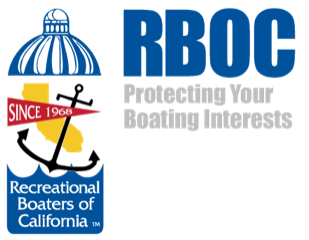RBOC Director Themis Glatman testified in the June 27 meeting of the Los Angeles Regional Water Quality Control Board in opposition to a proposed amendment to the water quality control plan that would set the stage for boaters to obtain permits, pay significant fees, and could even lead to a ban on the use of copper-based anti-fouling paints on boat hulls in Marina del Rey Harbor.
The regional board ultimately approved the staff’s proposed amendment to the Water Quality Control Plan for the Los Angeles Region to incorporate a Water Effects Ratio for Copper in Marina del Rey Harbor, to revise the Marina del Rey Harbor Toxic Pollutants TMDL, with a two-year extension of the final compliance deadline.
RBOC has engaged with regional boards as they have addressed copper in San Diego, Oceanside and Newport Bay, as well as this same Los Angeles regional board in its 2014 reconsideration of the TMDL and emphasized the necessity of accurate data and updated science in the development of new and reconsidered TMDLs.
It is important to boaters that actions taken by state, regional and local government entities to address copper in bodies of water base their decisions on science and data that is specific to the body of water under consideration, and that any bans or restrictions on the use of copper-based anti-fouling paints are accompanied by findings that alternatives are available, effective, and affordable.
RBOC has several concerns with the two¬year extension of the final compliance deadline that is in the amendment adopted on June 27. This is the time period within which the regional board will develop and consider adoption of enforceable steps and concrete actions for responsible parties to take, in the form of a regulatory mechanism such as a permit, a waiver, or something other mechanism.
First, the two-year extension is an insufficient period of time to achieve the board’s stated objective: the development of a regulatory mechanism to implement the TMDL. These include:
There is only limited information on the effectiveness of alternative paints and the uncertainty of the potential ecological impacts of non-biocide paints.
Ineffective alternatives present a clear risk for the introduction of invasive species and great harm to the environment.
There is a limited number of local boat yards that would be available to re¬paint boats in a short period of time.
Low income boaters will face increased costs of non¬biocide paints as well as more frequent hull cleaning, additional barriers to successful implementation in a condensed timeframe.
Second, the board has not identified or considered the extent to which boaters have been utilizing commercially based paints that have a copper leaching rate somewhere in the range from 0 to 9.5 ug/cm2, and there is no evaluation of the availability, costs, and effectiveness of these paints. This information is fundamental to an effective TMDL and should be developed prior to its adoption rather than during a deadline extension.
Third, a negative financial impact would be placed on individual boaters in the event the board adopts waste discharge requirements under Water Code Section 13363 as a regulatory mechanism to implement the TMDL. This would have an especially negative impact on the ability of low and moderate-income boaters to be able to access and benefit from on-the-water recreational opportunities.

